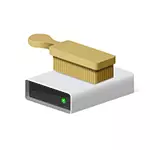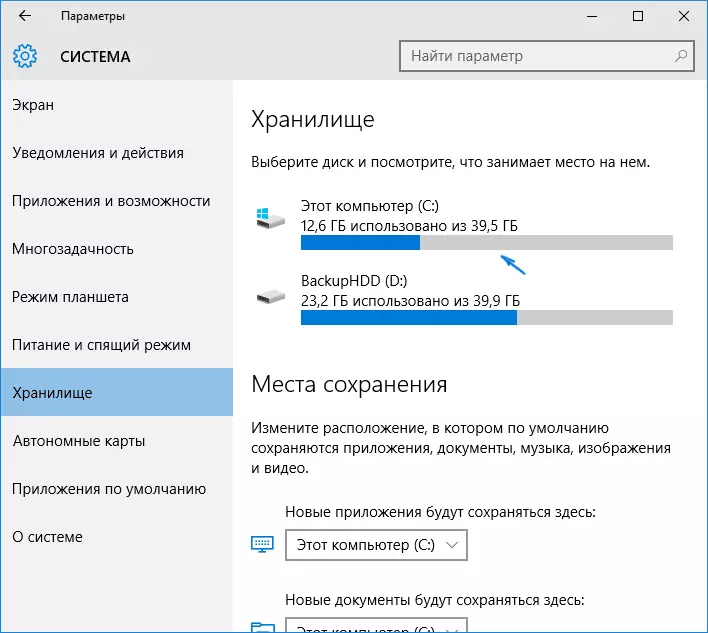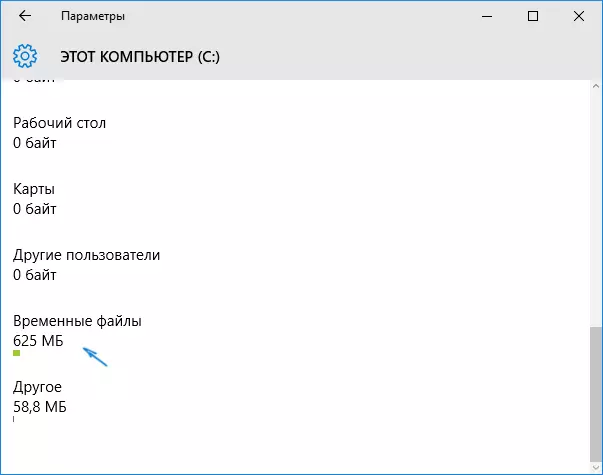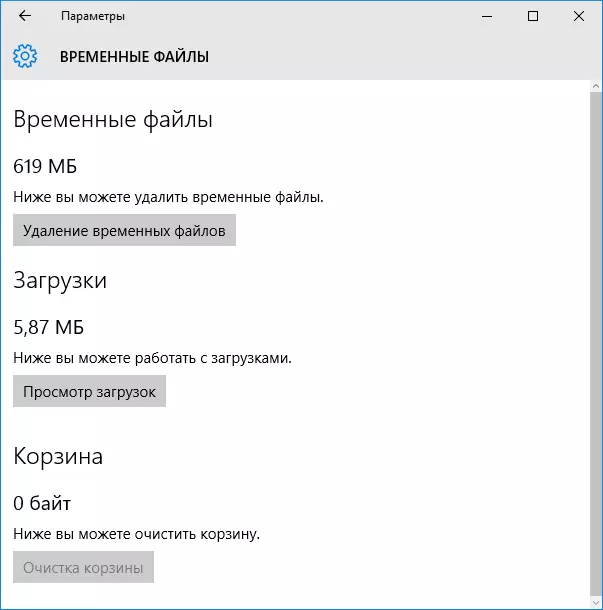
I note that the methods described below allow you to remove only those temporary files that the system can determine as such, however, in some cases, there may be other unnecessary data to be cleaned (see how to find out what is occupied on the disk). The advantage of the described options is that they are completely safe for the OS, but if more efficient methods are needed, you can read the article as clear the disk from unnecessary files.
Deleting temporary files using the "Storage" option in Windows 10
In Windows 10, a new tool for analyzing the contents of your computer drives or laptop, as well as the cleaning of unnecessary files. You can find it by going to "Parameters" (through the Start menu or by pressing the Win + I keys) - "System" - "Storage".

In this section, hard drives connected to a computer will be displayed or rather, partitions on them. If you choose any of the drives, you can learn what a busy place it. For example, select the C system disk (as it is on it in most cases and temporary files are located).

If you roll up a list with elements stored on the disk, to the end, you will see the "Temporary Files" item indicating the disk space occupied. Click on this item.

In the next window, you can separately delete temporary files, learn and clear the contents of the "Download" folder, find out how much space the basket takes and clean it.
In my case, almost perfectly clean Windows 10 was no more than 600 megabytes of temporary files. Click "Clear" and confirm the deletion of temporary files. The removal process will begin (which is not shown in any way, and it is simply written "We delete temporary files") and after a short time they will disappear from the hard disk of the computer (at the same time keep the cleaning window open optional).
Using the disk cleaning utility to delete temporary files
In Windows 10, there is also a built-in disk cleaning program (which is present in previous versions of the OS). It can delete those temporary files that are available when cleaning with the previous method and some optional.
To start it, you can use the search or press the Win + R keys on the keyboard and enter the CleanMGR into the "Run" window.

After starting the program, select the disk to be cleaned, and then the items you want to delete. Among the temporary files here are "temporary Internet files" and simply "temporary files" (the same, that was deleted by the previous method). By the way, you can also safely remove the RetailDemo Offline Content component (these are materials, to demonstrate Windows 10 in stores).

To start the deletion process, click "OK" and wait for the disk cleaning process from temporary files.

Deleting Windows 10 temporary files - video
Well, the video instruction in which all the steps associated with the deletion of temporary files from the system are shown and told.Where in Windows 10 temporary files are stored
If you want to delete temporary files manually, you can find them in the following typical locations (but may be optional used by some programs):
- C: \ Windows \ Temp \
- C: \ Users \ user_name \ APPDATA \ LOCAL \ TEMP (The default APPDATA folder is hidden. How to show hidden Windows 10 folders.)
Taking into account the fact that this instruction is intended for beginners, I think it is enough. Removing the contents of the specified folders you are almost guaranteed, do not damage anything in Windows 10. You may also come in handy article: The best programs for cleaning the computer. If some questions or misunderstanding remained, ask in the comments, I will try to answer.
